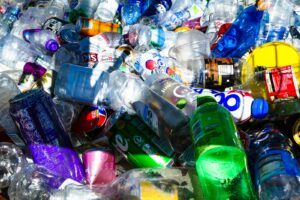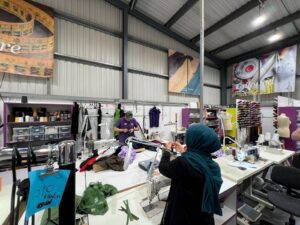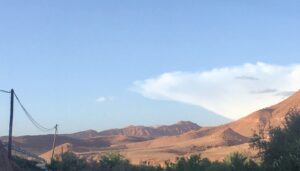Bottled water: health hero or environmental villain?
Last summer I spent some time in Amalfi, a Mediterranean town in southern Italy so beautiful people having been visiting since the days of Ancient Rome.
One warm afternoon I was sitting on the steps of the fountain in the central square, people watching. The cafés around me were crowded with tourists and a band was playing sentimental Italian songs. Every now and then, a couple would jump up from their table and start to dance across the square.
As I watched, a young man, clearly local, stepped around me leaned into the fountain towards a small nozzle (one of several built into the sculpture) that was squirting an arc of water into the pool, and started to drink.
When he finished he wiped his mouth smiled at me and then waved towards the tables in front of the cafes, pointing out the bottles of water sitting in front of most of the diners and said: ‘Very stupid. This is free.’
As I found out later, this fountain had been a drinking stop for years and there were several other places in town where a thirsty traveller could stop for natural refreshment. Yet every store and cafe had a wide variety of branded waters, available in plastic or glass at an exorbitant price.
And there was no shortage of customers. Proof, perhaps, of the greatest marketing strategy in retail history. One that sees people spending billions of dollars every year on something they can get from a tap in their kitchen.
Why this demand? Surely it cannot only be attractive packaging and cleverly placed advertisements? Personally, I suspect it is in part the product of timing.
The growth of bottled water
When I was kid, soft drinks were a treat – so if we were thirsty we had no choice but to drink water. In those days, there were also plenty of drinking fountains in parks and on busy streets, so it was easily available.
However, over time these have largely disappeared in many cities, as the cost of maintaining them went up and concerns about how ‘safe’ it was to drink from a ‘public trough’ increased.
Then in the 1980s, as jogging became a ‘compulsion’, those addicted not only needed a Sony Walkman to break the monotony of pounding the roads, but also a way to rehydrate themselves. Something convenient.
Finally, a growing public scepticism in government manifested itself in an increasing concern about the safety of potable water. This distrust can be seen in 63% of Americans who believe the water from their taps is contaminated, a view in part reinforced by isolated incidents of contamination, such as the lead in the water of Flint Michigan and more recently, microscopic plastic fibres that were found in 83% of water samples tested around the world (including samples from the headquarters building of the US Environmental Protection Agency and the Trump Tower in New York).
While the health impacts of this are microfibre contamination are still being assessed, almost all the available evidence suggests that tap water in developed economies is safe. Additionally, most potable water supply is subject to extensive testing – in fact, far more testing than bottle water, something reinforced by the fact the study also found plastic contamination in small samples of bottled water.
In this environment, it is not surprising that someone saw an opportunity to package water for sale.
The companies producing this product cleverly did not sell it as an alternative to tap water, but rather as a convenient, safe and healthy option to soft drinks, as well as a symbol of status and wealth. Then to emphasis the uniqueness of the product they packaged the most expensive in attractive glass bottles, gave them exotic names and made various references to mountain streams, natural springs etc, inferring that these were the sources.
The marketing worked, despite the fact the product has the same nutritional value as tap water. Every year, the volume of bottle sales increases, to the point that in countries like the USA an average of 39 gallons of water is consumed per American per year – more than milk and beer.
Community backlash
The marketing has also been so effective that for a long time it almost blotted out the environmental impacts of production.
For example, tens of billions of gallons of oil are used to produce the plastic bottles, as well as (perversely) 1.39 litre water for each litre bottled. Then there are the emissions generated by transporting the product to the points of sale and finally, the containers (more than 80%) that are not recycled, thus going to landfill or into water ways, where they eventually breakdown leaching chemicals or becoming part of the food chain.
In recent years there has been some community backlash. For example, in 2009, Bundanoon – a small country town in New South Wales Australia – became the first to ban the sale of bottled water.
Other towns around the world have followed, as have organisations like the University of Hong Kong and the University of Canberra.
Additionally, many countries have established bottle deposit schemes to improve recycling. In Australia, several states have either applied or are about apply a deposit of 10 cents on bottled water which is refunded when the bottle is returned. As a result, recycling has increased to over 85%.
The market is also seeing an opportunity here and entrepreneurs are responding with some interesting ideas. Recently several London based students crowdfunded a project to produce an ‘edible water bottle’. Known as ‘ooho’, the product will be a small water filled membrane created from seaweed extract that is tasteless and fully digestible.
Perhaps the most encouraging sign for an old timer like me, has been the reappearance of drinking fountains in towns and on school and university campuses. Rebranded ‘hydration stations’ and with attractive and functional designs that minimises maintenance, they allow people to top up reusable water bottles.
All of these are positive responses, but a multibillion-dollar industry is not going to stand still while this happening.
It continues to place bottles in the hands of celebrities and sports stars, selling the idea of association. The industry has also established a form of ‘ethical branding’, in which manufacturers contribute to good causes such as breast cancer research or funding of projects like clean water in the developing world, to ease the concerns of consumers.
This could easily be dismissed as a cynical marketing exercise, but given the reality that commercially bottled water is unlikely to disappear, is there are greater good argument to be made?
Which brings us to the real challenge of bottled water.
Of the packaged drink products on the market, water is clearly the ‘best’ option. No chemicals, no sugar, naturally sourced. On the other hand, the environmental impacts are significant.
So how do we balance them?
In the end, perhaps it’s as simple as educating the consumer, so they can make an informed choice, while at the same time promoting the economic value of the free ‘option’ available in their kitchen.
Photo: Warren McLaren / INOV8















